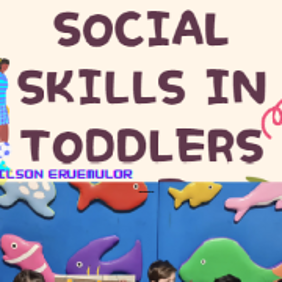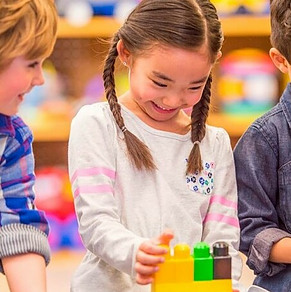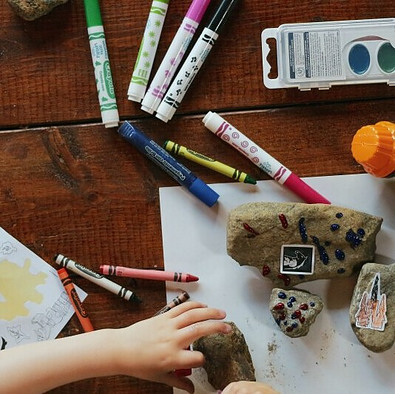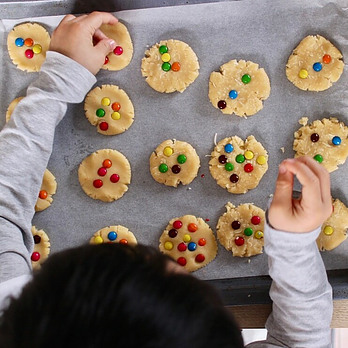activities for toddlers
- Engaging toddlers at home with fun and educational activities is a great way to promote their development and keep them entertained. Here are some ideas for activities that will engage and stimulate toddlers:
- Sensory Play:
These activities are not only entertaining but also support toddlers’ cognitive, sensory, and motor skills. It’s important to ensure that the activities are safe and supervised, especially when they involve small objects or materials that could be a choking hazard.
-
- Create a sensory bin with items like uncooked rice, pasta, beans, or sand for tactile exploration.
- Use playdough to encourage fine motor skill development and creativity.
- Arts and Crafts:
-
- Finger painting with non-toxic, washable paint.
- Collage making with safe materials like cut-out shapes, feathers, and colorful paper.
- Reading and Storytelling:
-
- Read interactive and colorful books with sound effects.
- Create a storytelling corner with puppets or stuffed animals to act out stories.
- Music and Movement:
-
- Have a dance party to lively music.
- Provide simple musical instruments like shakers, drums, or tambourines for exploration.
- Outdoor Play:
-
- Set up a mini obstacle course in the backyard or living room.
- Take a nature walk to observe and collect leaves, rocks, and other interesting items.
- Educational Games:
-
- Matching games with cards or objects.
- Shape sorting and stacking toys for cognitive development.
- Kitchen Play:
-
- Allow toddlers to ‘help’ in the kitchen with safe, age-appropriate tasks like stirring, pouring, or mixing.
The importance of engaging toddlers in activities at home
- Engaging toddlers in activities at home is crucial for their overall development and well-being. During the early years, toddlers are eager to explore, learn, and engage with the world around them. Providing them with stimulating activities not only keeps them occupied but also aids in their cognitive, physical, and emotional development.
Here are some key reasons why engaging toddlers in activities at home is important:
- Cognitive Development: Interactive activities such as reading, puzzles, and educational games help to enhance toddlers’ cognitive skills, including problem-solving, memory, and language development.
- Motor Skills: Engaging in physical activities such as running, jumping, and playing with toys or building blocks strengthens toddlers’ gross and fine motor skills, supporting their physical development.
- Creativity and Imagination: Art, music, and pretend play encourage toddlers to express themselves creatively and use their imagination, fostering their emotional and social development.
- Bonding and Social Skills: Engaging in activities with caregivers and siblings helps toddlers build strong bonds and develop essential social skills like sharing, taking turns, and communication.
- Routine and Structure: Regular engagement in activities at home establishes a sense of routine and structure, providing toddlers with a secure and predictable environment that contributes to their emotional well-being.
- Independence and Confidence: Allowing toddlers to participate in age-appropriate tasks and activities encourages independence and boosts their confidence as they accomplish new challenges.
- Building Curiosity and Learning: Activities that promote exploration and discovery, such as sensory play and nature walks, foster toddlers’ curiosity and love for learning about the world around them.
By engaging toddlers in a variety of activities at home, caregivers can support their holistic development and provide a nurturing environment that sets the stage for lifelong learning and well-rounded growth.
The role of play in early childhood development
- Play is a vital and natural aspect of early childhood development, contributing significantly to children’s cognitive, physical, social, and emotional growth. The role of play in early childhood development encompasses a wide range of benefits and serves as a powerful tool for learning and exploration. Here are some key aspects of the role of play in early childhood development:
- Cognitive Development:
In summary, play in early childhood serves as a critical avenue for holistic development, encompassing cognitive, physical, social, emotional, and language competencies. It is through play that children engage in meaningful learning experiences, develop essential skills, and form the foundation for future academic and social success.
-
- Play provides opportunities for problem-solving, critical thinking, and decision-making, essential skills for intellectual growth.
- Imaginative play, such as pretend play scenarios, encourages creativity, abstract thinking, and the development of storytelling and narrative skills.
- Physical Development:
-
- Active play, such as running, jumping, and climbing, promotes the development of gross motor skills and enhances physical fitness.
- Fine motor skills are honed through activities like building with blocks, manipulating small objects, and engaging in arts and crafts.
- Social and Emotional Development:
-
- Play allows children to understand and navigate social dynamics, fostering skills like cooperation, sharing, and empathy.
- Role-playing and imaginative play help children express and process emotions, understand different perspectives, and develop empathy.
- Language Development:
-
- Play provides opportunities for children to practice and enhance their language skills through conversations, storytelling, and imaginative play scenarios.
- Problem-Solving and Creativity:
-
- Play encourages children to experiment, innovate, and think outside the box, fostering problem-solving skills and creativity.
- Self-Expression and Identity:
-
- Through play, children can explore and express their unique personalities, preferences, and interests, contributing to the development of a sense of identity.
- Relationship Building:
-
- Play facilitates the formation of connections and friendships, as children engage in collaborative and cooperative activities.
Creative arts and crafts projects that promote fine motor skills
- Engaging in creative arts and crafts projects is an excellent way to promote and enhance fine motor skills in children. Here are some arts and crafts projects that specifically target the development of fine motor skills:
- Playdough Creations:
These activities not only foster fine motor skills but also ignite creativity and imagination in children. It’s important to provide age-appropriate materials and to supervise young children during these projects to ensure safety and guidance.
-
- Rolling, pinching, and shaping playdough to create various shapes, animals, and objects.
- Using plastic scissors to cut the playdough into different patterns and designs.
- Stringing Beads:
-
- Stringing colorful beads onto a shoelace, pipe cleaner, or yarn to create necklaces, bracelets, or simple shapes.
- Sorting beads by color, size, or shape before stringing them.
- Cutting and Pasting:
-
- Cutting out simple shapes or patterns from colored paper and pasting them onto a larger sheet to create collages.
- Using child-safe scissors to cut along lines or shapes to practice precision and control.
- Painting with Q-Tips:
-
- Dip Q-tips into non-toxic, washable paint and use them to create intricate designs, patterns, or dot art.
- Painting within the boundaries of a stencil or template to refine precision.
- Sticker Art:
-
- Peeling and placing stickers onto a designated surface to create themed scenes or patterns.
- Creating sticker mosaics by filling in larger shapes with smaller stickers.
- Play with Clothespins:
-
- Using clothespins to pick up and transfer small objects like cotton balls, pom-poms, or beads from one container to another.
- Pinning clothespins along the edge of a container or cardboard to strengthen hand muscles.
- Tracing and Drawing:
-
- Tracing simple designs, letters, or shapes using stencils and colored pencils or markers.
- Encouraging freehand drawing and coloring within defined boundaries to build precision and control.
Sensory play ideas to stimulate a toddler’s senses
Sensory play is a fantastic way to stimulate a toddler’s senses and promote overall development. Here are some engaging sensory play ideas tailored to stimulate a toddler’s senses:
- Sensory Bins:
-
- Fill a large plastic bin with materials that offer different textures, such as uncooked rice, dried beans, pasta, or shredded paper. Add scoops, funnels, and containers for scooping and pouring.
- Edible Sensory Play:
-
- Use safe, edible materials like cooked spaghetti, gelatin, or yogurt for messy and tactile play. Let the toddler explore the textures and sensations with their hands.
- Water Play:
-
- Provide water sensory activities like filling a tub or basin with water and adding safe objects for scooping, pouring, and splashing, such as cups, funnels, and floating toys.
- Playdough Play:
-
- Offer colored playdough paired with sensory items like beads, buttons, or dried pasta for molding, shaping, and creating textured imprints.
- Sensory Bottles:
-
- Create sensory bottles filled with colored water, glitter, small toys, or other items that move and provide visual stimulation when shaken.
- Sensory Walk:
-
- Set up a sensory walk by creating pathways with different textures such as bubble wrap, fabric scraps, or textured mats for toddlers to walk, crawl, or explore barefoot.
- Scented Sensory Play:
-
- Introduce scented materials like scented playdough, scented cotton balls, or small jars of herbs and spices for toddlers to experience different smells.
- Nature Sensory Baskets:
-
- Collect natural items like leaves, pinecones, smooth stones, or shells and place them in a basket for toddlers to explore through touch and sight.
It’s important to ensure that the materials used in sensory play are safe, non-toxic, and age-appropriate. Supervision is also crucial to ensure that toddlers engage with sensory materials in a safe and appropriate manner. Sensory play not only stimulates the senses but also supports cognitive, language, and social-emotional development in toddlers.
Educational screen time: selecting quality programs and interactive apps
When it comes to educational screen time for toddlers, it’s essential to select high-quality programs and interactive apps that offer enriching and age-appropriate content. Here are some guidelines for choosing quality educational screen time options for toddlers:
- Educational Content:
-
- Look for programs and apps that are designed specifically for early childhood education and are aligned with developmental milestones.
- Choose content that focuses on fundamental skills such as language development, early math concepts, problem-solving, and creative expression.
- Interactive and Engaging:
-
- Opt for programs and apps that are interactive and engaging, providing opportunities for active participation rather than passive viewing.
- Select content that encourages children to respond, make choices, and solve problems within the context of the program or app.
- Developmentally Appropriate:
-
- Ensure that the content is age-appropriate, considering the cognitive and emotional development of toddlers. Look for programs and apps that are tailored to the needs of young learners.
- Positive Social Messages:
-
- Choose programs and apps that convey positive social messages, promote empathy, diversity, and cooperation, and help toddlers understand emotions and relationships.
- Limited Advertisements:
-
- Select content with minimal or no advertising to minimize distractions and to ensure that the focus remains on learning and engagement.
- Parental Involvement and Control:
-
- Look for programs and apps that offer parental controls, allowing caregivers to monitor and limit screen time, as well as to track their child’s progress.
- Learning Through Play:
-
- Choose programs and apps that facilitate learning through play, exploration, and creative expression, integrating educational goals with fun and enjoyment.
Some reputable sources for high-quality educational screen time content include PBS Kids, Nick Jr., and apps recommended by trusted early childhood educators and child development experts.
By being selective about the educational screen time options for toddlers, caregivers can ensure that their children’s screen time is not only educational but also enriching, stimulating, and aligned with their developmental needs.
Music and movement activities to encourage physical development
Engaging toddlers in music and movement activities is a fantastic way to encourage physical development while also allowing them to have a great time. Here are some music and movement activities tailored to promote physical development in toddlers:
- Dance Party:
-
- Encourage toddlers to move and groove to lively music, allowing them to express themselves through movement and rhythm.
- Musical Statues:
-
- Play a game of musical statues where toddlers dance when the music is playing and freeze when it stops, promoting balance and control.
- Follow the Leader:
-
- Take turns being the leader and encourage toddlers to mimic different movements such as jumping, clapping, or marching to the beat of the music.
- Scarf Play:
-
- Provide colorful scarves for toddlers to twirl, wave, and toss, encouraging the development of hand-eye coordination and gross motor skills.
- Action Songs:
-
- Sing songs with accompanying actions, such as “The Hokey Pokey” or “Head, Shoulders, Knees, and Toes,” to encourage whole-body movement and coordination.
- Musical Instruments:
-
- Provide simple musical instruments like shakers, drums, and tambourines for toddlers to explore different sounds and engage in rhythmic movement.
- Obstacle Course:
-
- Set up a simple obstacle course with pillows, cushions, and tunnels, encouraging toddlers to crawl, climb, and navigate through the course.
- Nature Walk:
-
- Take toddlers on a nature walk and encourage them to explore and move freely, promoting physical activity and appreciation for the outdoors.
These activities not only promote physical development but also encourage creativity, self-expression, and a love for music and movement. It’s important to create a safe and conducive environment for these activities and to ensure that toddlers are supervised during the play.
Storytelling and reading time to enhance language skills
- Engaging in storytelling and reading activities is a wonderful way to enhance toddlers’ language skills and foster a love for literacy. Here are some effective approaches to storytelling and reading time to promote language development in toddlers:
- Interactive Storytelling:
By incorporating these storytelling and reading strategies, caregivers can create a nurturing and engaging environment that supports language development and cultivates a lifelong love for literature in toddlers. Remember to make storytelling and reading time an enjoyable and interactive experience for both the toddlers and the caregivers.
-
- Encourage toddlers to participate in storytelling by asking them open-ended questions, allowing them to make predictions, or inviting them to act out parts of the story using props or puppets.
- Picture Books:
-
- Choose colorful and engaging picture books with simple narratives and vivid illustrations to capture toddlers’ attention and enrich their vocabulary.
- Narrative Retelling:
-
- After reading a story, encourage toddlers to retell the narrative in their own words, promoting comprehension, memory, and expressive language skills.
- Rhyme and Rhythm:
-
- Select books with rhymes, repetitive phrases, and rhythmic patterns to help toddlers develop phonological awareness and an understanding of language patterns.
- Story Props:
-
- Use story props or felt board characters to bring stories to life, allowing toddlers to visually connect with the narrative and engage with the characters and settings.
- Book Exploration:
-
- Provide opportunities for toddlers to explore books independently, flipping through pages, pointing at pictures, and making observations to foster a sense of curiosity and exploration.
- Story Sequencing:
-
- Engage toddlers in activities that involve sequencing the events of a story or arranging picture cards in the correct order, promoting comprehension and narrative understanding.
- Vocabulary Enrichment:
-
- Introduce books that introduce new words and concepts, pausing to discuss and define unfamiliar vocabulary to enhance toddlers’ language comprehension and expression.
Practical life activities: simple chores toddlers can help with
- Involving toddlers in practical life activities and simple chores not only teaches them essential life skills but also fosters a sense of responsibility, independence, and self-confidence. Here are some simple chores that toddlers can help with under adult supervision:
- Setting the Table:
It’s important to adapt these activities to match the developmental capabilities of each toddler and to provide guidance and supervision to ensure their safety and the completion of tasks. By involving toddlers in these simple chores, caregivers can instill a sense of contribution and accomplishment while teaching valuable practical skills.
-
- Task toddlers with placing napkins, utensils, or unbreakable dishware on the table before meals.
- Putting Away Toys:
-
- Encourage toddlers to assist in picking up and putting away their toys and books after playtime.
- Matching Socks:
-
- Engage toddlers in matching and pairing socks during laundry time, promoting visual discrimination and fine motor skills.
- Watering Plants:
-
- Provide a small watering can and supervise toddlers as they help water potted plants or a small garden.
- Dusting:
-
- Give toddlers a soft cloth and let them assist in dusting low surfaces, such as tables or chairs, with gentle supervision.
- Sorting Laundry:
-
- Involve toddlers in sorting laundry by color, providing them with a basket for placing items of the same color together.
- Sweeping with a Small Broom:
-
- Allow toddlers to use a child-sized broom to mimic sweeping motions, encouraging participation in household cleaning tasks.
- Wiping Spills:
-
- Teach toddlers to use a damp cloth to help wipe up minor spills or messes under supervision.
- Feeding Pets:
-
- Guide toddlers in pouring pre-measured food into pet bowls or providing water to family pets.
- Assisting with Simple Food Preparation:
-
- Enlist toddlers to help with tasks like washing fruits and vegetables, mixing ingredients, or tearing lettuce for salads.
Outdoor activities for toddlers in the backyard or balcony
- Engaging toddlers in outdoor activities in the backyard or on a balcony is a great way to encourage exploration, physical activity, and a connection with nature. Here are some enjoyable outdoor activities suitable for toddlers in these spaces:
- Sensory Play:
These outdoor activities provide toddlers with opportunities for exploration, physical movement, and engagement with the natural world while ensuring their safety and enjoyment. It’s important to supervise toddlers during outdoor play and to create a safe and stimulating environment for their outdoor experiences.
-
- Set up a sensory bin filled with sand, water, or safe materials like uncooked rice and let toddlers explore and manipulate the textures.
- Nature Scavenger Hunt:
-
- Create a simple scavenger hunt for toddlers to find and collect natural objects like leaves, pinecones, or flowers in the backyard.
- Water Play:
-
- Provide a shallow water table or container for toddlers to splash, pour, and play with water while staying cool and engaged.
- Bubble Time:
-
- Encourage toddlers to chase and pop bubbles, promoting hand-eye coordination and gross motor skills.
- Chalk Art:
-
- Offer colored sidewalk chalk for toddlers to create drawings, shapes, and patterns on the pavement or balcony floor.
- Mini Obstacle Course:
-
- Arrange safe objects like cones, hula hoops, or cushions to create a simple obstacle course for toddlers to navigate.
- Planting and Gardening:
-
- Involve toddlers in planting seeds, watering plants, or observing the growth of flowers or vegetables in child-friendly gardening areas.
- Picnic or Tea Party:
-
- Arrange a small picnic or tea party with a blanket and soft toys for toddlers to enjoy snacks or pretend play outdoors.
- Balloon Play:
-
- Engage toddlers in gentle bat-and-chase games with large, lightweight balloons to encourage movement and coordination.
- Shadow Play:
-
- Use sunny outdoor areas to explore and create shadows with hands, toys, or simple puppets, fostering creative expression and imagination.
Tips for parents to keep the activities engaging and stress-free
- To keep activities engaging and stress-free for both parents and toddlers, it’s essential to create a positive and supportive environment that encourages participation and enjoyment. Here are some tips for parents to facilitate engaging and stress-free activities with their toddlers:
- Encourage Choice and Independence:
By incorporating these tips, parents can create an atmosphere that promotes engagement, joy, and a sense of accomplishment for both themselves and their toddlers. It’s important to approach activities with patience, flexibility, and a focus on the well-being and enjoyment of the toddlers.
-
- Offer toddlers choices within the activities, allowing them to select from options and encouraging a sense of autonomy and independence.
- Emphasize Exploration and Creativity:
-
- Foster an environment that values the process over the end product, allowing toddlers to explore, experiment, and get creative without pressure for perfection.
- Maintain Flexibility:
-
- Be open to modifications and adjustments during activities to accommodate the unique interests, attention spans, and energy levels of toddlers.
- Model Enthusiasm and Participation:
-
- Demonstrate enthusiasm and active participation in the activities, conveying a positive attitude and a willingness to engage with the toddlers.
- Provide Encouragement and Positive Reinforcement:
-
- Offer genuine praise and encouragement for toddlers’ efforts and accomplishments, promoting a sense of confidence and motivation.
- Keep It Simple and Manageable:
-
- Opt for activities that are age-appropriate, simple to set up, and easy to manage, minimizing stress and allowing for a smooth experience.
- Maintain a Relaxed Pace:
-
- Prioritize enjoyment and connection over rushing through activities, allowing ample time for toddlers to explore, learn, and express themselves.
- Embrace Unstructured Play:
-
- Allow for unstructured play where toddlers can lead the way, fostering creativity, problem-solving, and self-directed learning.
- Foster a Supportive Atmosphere:
-
- Create a nurturing and judgment-free environment where toddlers feel safe to express themselves and try new things without fear of failure.
- Adapt to Individual Preferences:
-
- Acknowledge and respect the unique interests, abilities, and comfort levels of each toddler, tailoring activities to suit their individual needs. I recommend this book to help in your kids activites
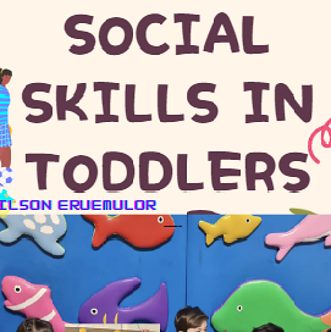
- Acknowledge and respect the unique interests, abilities, and comfort levels of each toddler, tailoring activities to suit their individual needs. I recommend this book to help in your kids activites

